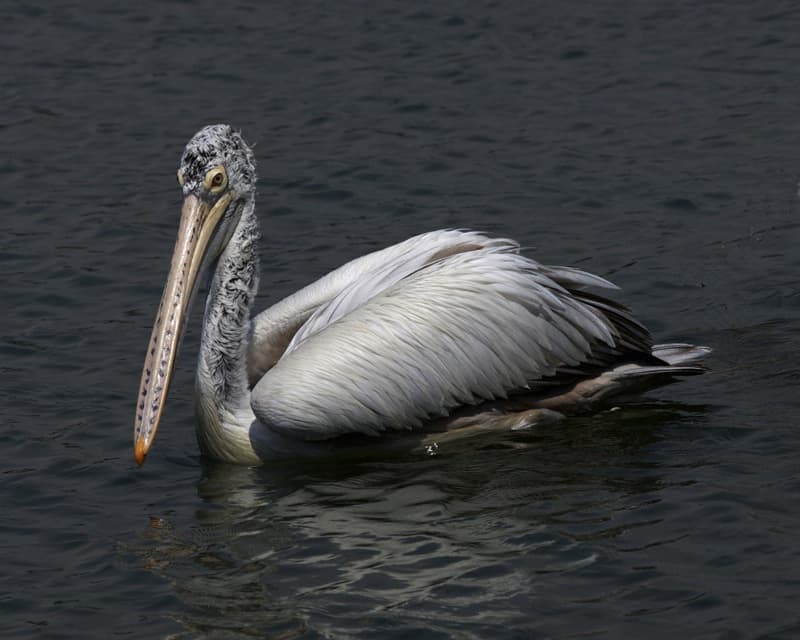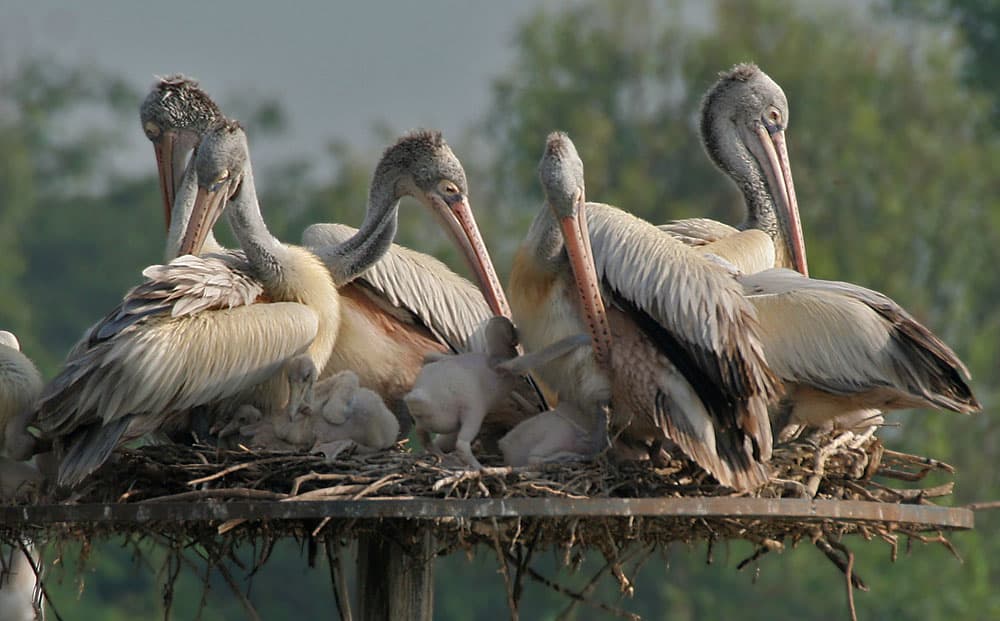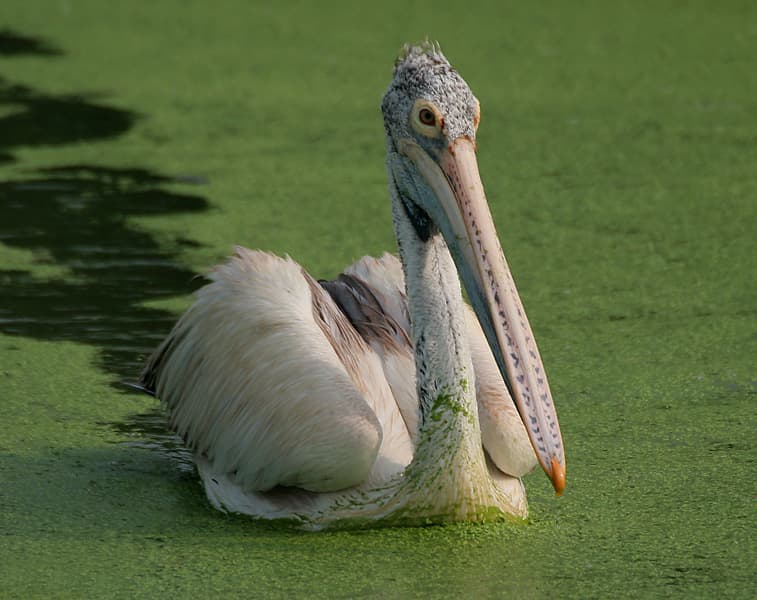The spot-billed pelican is a large inland and coastal waters bird, and their number is not doing well these days. People do not only destroy their habitats but also hunt them, causing a great population decline. This is why I want to talk about this beautiful bird today so that their existence is more known. Let’s find out more about them together below, shall we?
Appearance

Spot-billed pelicans can grow from 125 to 152 centimeters long with a wingspan of 213 to 250 centimeters. A spot-billed pelican is mainly white, and it has a gray crest and hind neck with a brownish tail. The interesting part is that the feathers on its hind neck are curly, and they form a grayish nape crest. These large water birds also have large bills that can be from 28.5 to 35.5 centimeters long. The tip of the bill is yellow to orange, and the pouch is pink to purplish with large pale spots. There are also spots on the sides of the upper mandible as well.
Behavior

Usually, these pelicans are very silent but they can make grunts and hisses, or snap their bills. The spot-billed pelicans only breed in Cambodia, Peninsular India, and Sri Lanka. As colonial breeders, they often breed in the company of other waterbirds. They build nests on low trees 10 to 20 meters high near wetlands but also near human habitats sometimes. There could be 6 to 12 nests in one tree, and each nest is 3 to 4 branches apart from each other. Spot-billed pelicans start nesting in September, laying eggs in October and November, and the colony is empty in May.
Feeding & Habitats

Pelicans catch fish in their huge bill pouch while swimming at the surface, and this species does the same thing. Along with that, they usually fish singly or in small flocks that work together to drive fish toward the shallows. Spot-billed pelicans feed on fish of various sizes as well as frogs, lizards, snakes, and other aquatic prey.
This pelican species is widely distributed throughout South Asia and Southeast Asia. The main habitats of these birds are in shallow lowland freshwaters, and they are not migratory. Additionally, they also occupy brackish lagoons, coasts, estuaries, floodplain meadows, lakes, reservoirs, rivers, swamps, and tidal floodplains. Unfortunately, they are facing habitat loss which affects their population greatly. At the same time, disturbances to breeding sites, excessive fishing and hunting, and mangrove cutting also play a part. As a result, spot-billed pelicans are now listed as Near Threatened on the IUCN Red List.
Related Post: Stork Species In Cambodia
